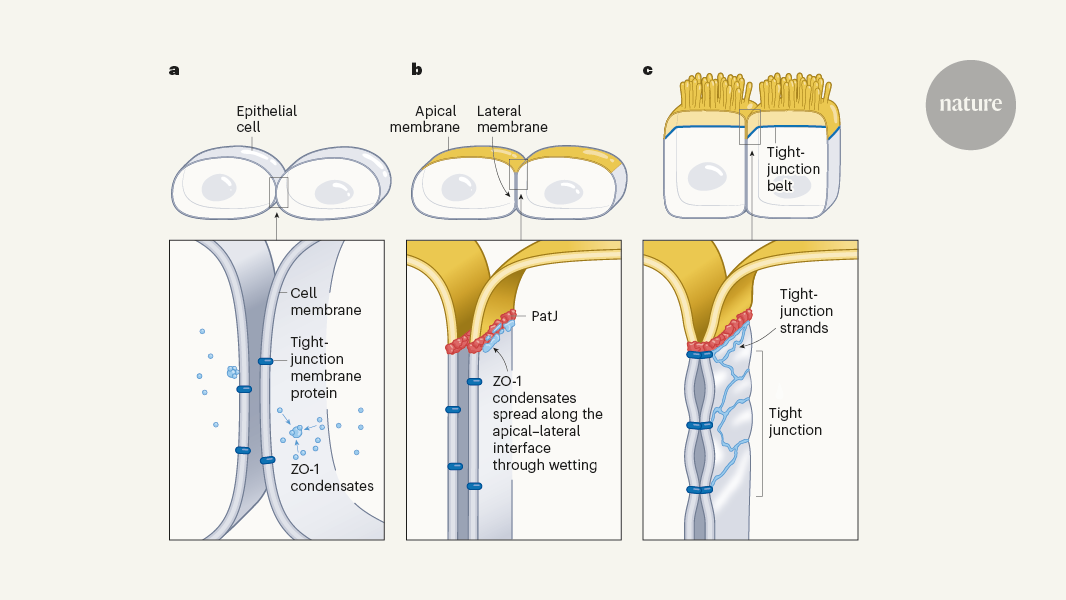Protein Droplets Facilitate the Formation of Tight Junctions Between Cells
The article discusses how cells use compartmentalization not only through membrane-bound organelles, but also through the formation of droplet-like macromolecular condensates. These condensates arise from weak and multivalent interactions between proteins or between proteins and nucleic acids, a process known as liquid-liquid phase separation.
When these condensates come into contact with cell membranes, a phenomenon called wetting is observed. Wetting refers to the way a liquid spreads over a 2D surface, similar to how a water droplet spreads over glass. This wetting process has been implicated in a broad range of biological processes.
The key finding reported in this article is that wetting of cell membranes by protein condensates underlies the formation of specialized connections called tight junctions between cells. Tight junctions are important for maintaining the integrity and permeability of epithelial and endothelial barriers in the body.
The article provides insights into how the physical properties of protein condensates and their interactions with membranes can drive the assembly of complex cellular structures like tight junctions, which are crucial for tissue and organ function.
ปรับแต่งบทสรุป
เขียนใหม่ด้วย AI
สร้างการอ้างอิง
แปลแหล่งที่มา
เป็นภาษาอื่น
สร้าง MindMap
จากเนื้อหาต้นฉบับ
ไปยังแหล่งที่มา
www.nature.com
Protein droplets spread to seal tight junctions
ข้อมูลเชิงลึกที่สำคัญจาก
by Alexander Lu... ที่ www.nature.com 08-07-2024
https://www.nature.com/articles/d41586-024-02234-7
สอบถามเพิ่มเติม
